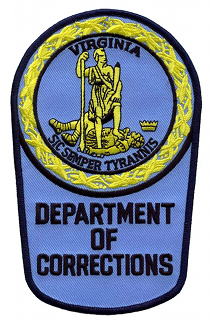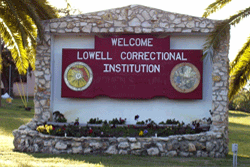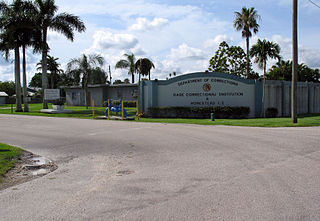
The Wyoming Department of Corrections (WDOC) is a state agency of Wyoming that operates adult correctional facilities. It is headquartered in Suite 100 of the 1934 Wyott Drive building in Cheyenne.

The Mississippi Department of Corrections (MDOC) is a state agency of Mississippi that operates prisons. It has its headquarters in Jackson. As of 2020 Burl Cain is the commissioner.

Recidivism is the act of a person repeating an undesirable behavior after they have experienced negative consequences of that behavior, or have been trained to extinguish it. Recidivism is also used to refer to the percentage of former prisoners who are rearrested for a similar offense.

Mississippi State Penitentiary (MSP), also known as Parchman Farm, is a maximum-security prison farm located in the unincorporated community of Parchman in Sunflower County, Mississippi, in the Mississippi Delta region. Occupying about 28 square miles (73 km2) of land, Parchman is the only maximum security prison for men in the state of Mississippi, and is the state's oldest prison.

The Federal Correctional Institution, Danbury is a low-security United States federal prison for male and female inmates in Danbury, Connecticut. It is operated by the Federal Bureau of Prisons, a division of the United States Department of Justice. The facility also has an adjacent satellite prison camp that houses minimum-security female offenders.

Convict leasing was a system of forced penal labor that was practiced historically in the Southern United States, the laborers being mainly African-American men; it was ended during the 20th century. It provided prisoner labor to private parties, such as plantation owners and corporations.
Federal Correctional Institution, Tallahassee, is a low security United States federal prison for female inmates in Tallahassee, Florida with a designed designated capacity of 812. It is operated by the Federal Bureau of Prisons, a division of the Department of Justice. The facility also has an adjacent detention center that houses administrative security level male inmates.

The Virginia Department of Corrections (VADOC) is the government agency responsible for community corrections and operating prisons and correctional facilities in the Commonwealth of Virginia in the United States. The agency is fully accredited by the American Correctional Association and is one of the oldest functioning correctional agencies in the United States. Its headquarters is located in the state capital of Richmond.
The Broward Correctional Institution (BCI) was a correctional facility located in the former Country Estates CDP and in Southwest Ranches, Florida, operated by the Florida Department of Corrections. The Region IV Correctional Facility Office is located on the grounds of Broward Correctional Institution in the former Country Estates CDP. The prison was in proximity to Pembroke Pines. It was located along Sheridan Street, near U.S. Route 27.

The Texas Department of Criminal Justice (TDCJ) is a department of the government of the U.S. state of Texas. The TDCJ is responsible for statewide criminal justice for adult offenders, including managing offenders in state prisons, state jails, and private correctional facilities, funding and certain oversight of community supervision, and supervision of offenders released from prison on parole or mandatory supervision. The TDCJ operates the largest prison system in the United States.

The Department of Public Safety and Corrections (DPS&C) is a state law enforcement agency responsible for the incarceration of inmates and management of facilities at state prisons within the state of Louisiana. The agency is headquartered in Baton Rouge. The agency comprises two major areas: Public Safety Services and Corrections Services. The secretary, who is appointed by the governor of Louisiana, serves as the department's chief executive officer. The Corrections Services deputy secretary, undersecretary, and assistant secretaries for the Office of Adult Services and the Office of Youth Development report directly to the secretary. Headquarters administration consists of centralized divisions that support the management and operations of the adult and juvenile institutions, adult and juvenile probation and parole district offices, and all other services provided by the department.

The Union Correctional Institution, formerly referred to as Florida State Prison, Raiford Prison and State Prison Farm is a Florida Department of Corrections state prison located in unincorporated Union County, Florida, near Raiford.

Lowell Correctional Institution is a women's prison in unincorporated Marion County, Florida, north of Ocala, in the unincorporated area of Lowell. A part of the Florida Department of Corrections, it serves as the primary prison for women in the state. Almost 3,000 women are incarcerated in the complex, which includes the Lowell Annex. As of 2015 2,696 women are in the main Lowell CI, making it the largest prison for women in the United States; its prison population became larger than that of the Central California Women's Facility that year.

The Idaho Department of Correction (IDOC) operates nine prisons, four community release centers and 20 probation and parole offices in seven districts located throughout the state of Idaho. The agency has its headquarters in Boise.

The North Carolina Department of Adult Correction (NCDAC) is the agency responsible for corrections in the U.S. state of North Carolina. NCDAC was formed as a cabinet level agency at the start of 2023, after corrections had been part of the North Carolina Department of Public Safety since 2012.
The Baldwin State Prison, previously the Baldwin Correctional Institution and the Georgia Women's Correctional Institution (GWCI), is a prison located in Milledgeville, Georgia, United States, with a Hardwick postal address. The prison has a capacity of 900. After complaints in the early 1990s by more than 200 women of sexual abuse by guards, an investigation was conducted. More than a dozen guards were prosecuted. The state decided to move the women to other prison facilities for a total change in culture. This facility now houses only adult male felons, with a capacity of 992.

Metro State Prison, previously the Metro Correctional Institution, is a former Georgia Department of Corrections prison for women in unincorporated southern DeKalb County, Georgia, near Atlanta. Female death row inmates were held in the Metro State Prison. The prison had room for 779 prisoners. It was closed in 2011. In 2018, the prison was renovated and reopened as the Metro Reentry Facility.

The Dade Correctional Institution is a prison in unincorporated Miami-Dade County, Florida, near Florida City, and south of Homestead, in Greater Miami. It houses adult males. It opened in September 1996. It is a part of the Florida Department of Corrections, and is right next to the Homestead Correctional Institution which houses female inmates.

On July 17, 1999, death row inmate Frank Valdes was killed at Florida State Prison in Bradford County. That morning, nine correctional officers, carrying stun guns, entered his cell and beat him to death.
The Gulf Correctional Institution is a state prison for men located in Wewahitchka, Gulf County, Florida, owned and operated by the Florida Department of Corrections. With a mix of security levels including minimum, medium, and close, this facility was opened in 1992 and has a maximum capacity of 1568 prisoners.


























